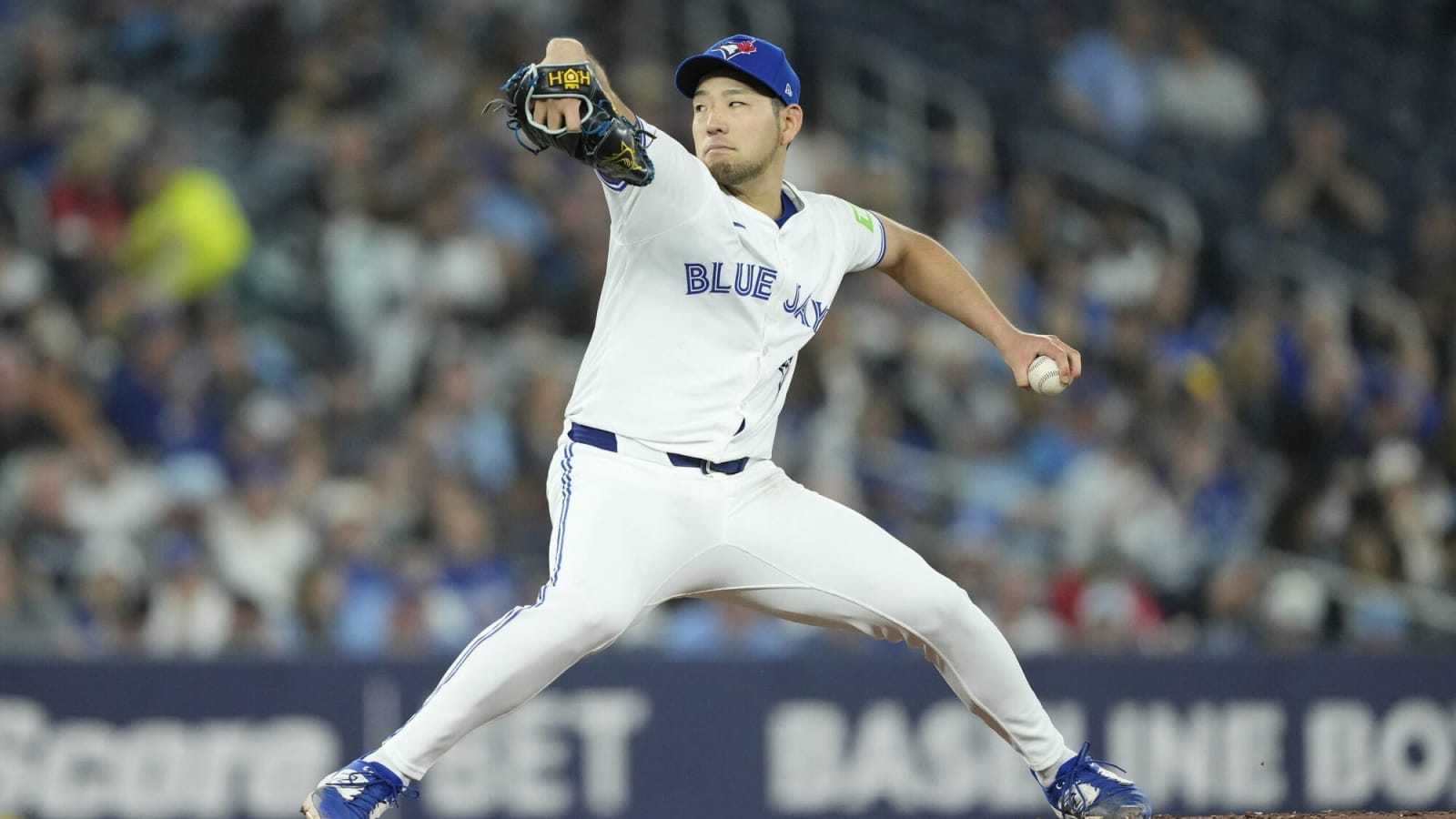
Yusei Kikuchi’s three-year, $36 million contract with the Blue Jays ends this year. Would Toronto want to extend the lefty’s contract, and if so, what would an extension look like?
Start with the obvious caveat: there are many factors that could affect that decision that are still in play. Kikuchi is currently playing like a Cy Young candidate, with a top-20 2.08 ERA (and a top-12 xERA). If he continues at that level, it will make him more attractive as a free agent – and a more expensive extension candidate.
There are also external factors. The Jays have Kevin Gausman and Jose Berrios under contract through 2026, and Chris Bassitt through 2025. So they only have two rotation spots left. If Ricky Tiedemann had a healthy and productive year in Buffalo, Alek Manoah rediscovered his mojo and Yariel Rodriguez continued to produce at the MLB level, the Jays might conclude that they did not need a Kikuchi (and that their free agent dollars could better be spent elsewhere)
But consider a middle-of-the-road scenario where Yusei pitches at something like his 2023 level of a 3.86 ERA, and the Tiedemann/Manoah/Rodriguez performance is good but not good enough to make him superfluous. In that scenario, the Jays might want to consider extending Kikuchi, and Yusei might be willing to listen. So, what might such an extension look like?
Kikuchi will pitch in 2025 at the age of 34. Starting pitchers entering their age-34 season are usually limited to two or three-year contracts.
Perhaps the most obvious example is Chris Bassitt, who signed a 3-year, $63-million deal with the Jays in 2022, going into his age-34 season. But Chris was arguably more of a known quantity than Yusei. Bassitt’s WAR over the three years before signing with Toronto was 7.4, and he was coming off seasons of 181 and 157 innings pitched. Yusei had a strong 2023, but even so, his career WAR through 2023 was only 4.3. So, barring a multiple-Cy-Young-vote year in 2024, the Bassitt comp might be a ceiling for Yusei.
Nathan Eovaldi signed a 2-year, $34 million deal in the 2022-23 offseason with a vesting player option if he pitched a combined 300 innings in 2023 and 2024. The 2023 campaign was Nathan’s age 33 season, but given the 11 (!) years he had pitched in the majors through 2022, the comparison is not too far off. Eovaldi was similar to Yusei in that he had a good year in his recent past (a 5.7 WAR in 182 innings in 2021), but he had less impressive years on his resume, too (largely due to injury). Yusei has fewer injury concerns, so a two-year + one would not seem necessary. The $17 million AAV should be in the right ballpark.
Jose Quintana signed a two-year, $26 million deal going into 2023 (his age 34 season). He was coming off an excellent 4 WAR in 2022, but he had not had an ERA under four for the previous five seasons. So he was considered a high-floor low-to-mid-rotation starter without much upside at that point in his career (hence the low $13 million AAV). Yusei would likely be seen as having a higher upside than Jose did at this stage, so the $13 million would be very much a floor.
Tyler Anderson signed a 3-year, $39 million deal going into 2023 (his age 33 season). Like Quintana, he was considered a relatively low-risk, low-to-mid rotation starter. His 2022 was excellent, with a 2.57 ERA over 178 innings and a 4.0 WAR. But his record before that was spotty, and his 6.95 K/9 and .256 BABIP made teams wary. Like Jose, his $13 million AAV should be considered a floor.
Sonny Gray signed a 3-year deal worth $75 million entering 2023 (his age-34 year). But Gray was coming off a Cy-Young-runnerup year, with a 2.79 ERA and a 5.3 WAR (Gray was top-10 in Cy Young voting in 2015 and 2019 as well). From 2019-23, Gray’s 670 IP was 24th best in MLB, and his 3.22 ERA was 16th. So perhaps not elite, but consistently very, very good. His $25 million AAV should, therefore, be seen as a ceiling for Yusei.
And one final comp: Marcus Stroman (remember him?) was entering his 2024 age-33 season when he signed a two-year, $37-million deal with the Yankees (which also included a vesting player option for a third year at $18 million if he pitches for 140 innings in 2025). Marcus was coming off a strong 3.50 ERA in 2022 and 3.95 in 2023, but there were red flags. His xERA in those two years was 3.94 and 4.27, and he only averaged 25 starts and 137 innings pitched. Nevertheless, the Stro Show might have been able to obtain a slightly higher salary (he was projected to earn a two-year, $44 million deal). But he has always expressed a strong interest in pitching for the Yankees, and he might have sacrificed a bit of AAV to make that dream come true.
The bottom line
Clearly, the longer Kikuchi continues to pitch at his current rarefied level, the higher his price will rise and the less inclined he will be to sign an extension at anything less than uber terms. But assuming he comes back down to a 2023 level (which is still very good), he should be willing to at least listen to an extension offer of 2-3 years at an AAV of $18-20 million.
So, two years, $40 million? Three years, $56 million? Or something more creative, like two years and $44 million with a team option for a third year at $18 million?
More must-reads:
- Rangers lose two-time All-Star starting pitcher to injury
- Watch: Prospect stunned, confused after being removed mid-game due to trade
- The 'MLB Rookies of the Year' quiz
Breaking News
Customize Your Newsletter
 +
+
Get the latest news and rumors, customized to your favorite sports and teams. Emailed daily. Always free!

